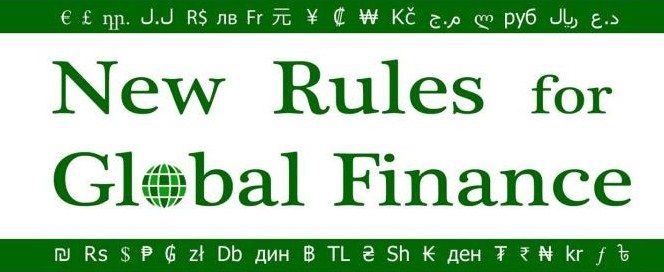Sovereign Debt Restructuring: Options, Obstacles and Opportunities
Description:
New Rules for Global Finance, Jubilee USA, Uganda Debt Network, and the Centre for International Governance Innovation (CIGI) hosted a discussion on the issue of sovereign debt restructuring. The goal of this session was to share, discuss, and debate a variety of proposals and ideas for addressing sovereign debt crises. The session did not seek to promote any particular position or approach, but aimed to stimulate, broaden and deepen the dialogue on sovereign debt. Following brief presentations by panelists, there was an open dialogue with participants, which contributed to an on-going public consultation on sovereign debt restructuring. In addition, participants had the opportunity to give feedback on the concept paper “Sovereign Debt Restructuring” – prepared by the Center for International Governance Innovation (CIGI) for the public consultation.
Panelists:
- Eric LeCompte, Executive Director, Jubilee USA
- Miranda Xafa, CIGI Senior Fellow
- Ezra Sumura, Chairman, Uganda Debt Network
- Sergio Chodos, IMF Executive Director for Argentina
- Jo Marie Griesgraber, Executive Director, New Rules for Global Finance (Chair)
Date: October 11, 2014
Time: 3:00-4:00pm
Where: World Bank I-Building, Room I-2-220
Summary of Comments from Panelists:
Eric LeCompte, executive director of Jubilee USA, outlined recent discussions on "core" issues of sovereign debt restructuring including:
- The IMF’s October 2014 report, "Strengthening the Contractual Framework to Address Collective Action Problems in Sovereign Debt Restructuring"
- The ICMA’s new standards for CACs and pari passu
- The September 2014 endorsement of the ICMA by the G20
- The UN General Assembly’s Resolution "Towards the Establishment of a Multilateral Legal Framework for Sovereign Debt Restructuring Processes"
Through this discussion, Eric explained that approaches to sovereign debt restructuring currently in debate by policymakers can be broken down into market approaches, statutory approaches and the creation of a sovereign bankruptcy system, warning that market approaches of revising CACs and pari passu clauses, as put forth by the ICMA and IMF, leave the current stock of debt outstanding unprotected.
Miranda Xafa, a senior fellow at CIGI, provided an analysis of the Greek experience with sovereign debt restructuring, outlining the specific circumstances that made the Greek experience unique including: 1) Greece’s membership in the Eurozone, and that 2) Greek debt was issued under domestic law initially without CACs, which were later retrofitted to contracts so Greece could pursue a less "coercive" restructuring. In 2012, Greek debt underwent the largest restructuring in the history of sovereign debt, restructuring 205 billion euros of debt. Despite cuts of roughly 50% of face values, debt relief by restructuring was still "too little, too late." In the first 19 months of the crisis, 50 billion euros of debt matured and was paid in full. As debt stress increased, remaining debt was sold largely to predatory creditors. Hesitations to act on the Greek debt problem stemmed from the fear of contagion. Eventually, IMF loans were issued to Greece despite uncertainty surrounding the sustainability of Greek debt. As Greek debt turned out to be unsustainable, Miranda noted that the IMF has become more disciplined in waiting until sustainability can be ensured before loaning to heavily-indebted sovereigns. She concluded that the Greek sovereign debt crisis was exacerbated by both a regulatory failure and a market failure. For these reasons, she argued in favor of crisis management institutions, recognizing that even the risk of insolvency can turn into a "self-fulfilling prophecy."
Ezra Sumura, chairman of the Uganda Debt Network, referenced the findings of the Uganda Debt Network and CIGI’s jointly-hosted August 2014 conference of African leaders on sovereign debt. Identifying 317 sovereign debt restructurings on the African continent since the 1980s, African leaders have sought greater voices in current, ongoing and future debates on issues of sovereign debt. Though HIPC was helpful and allowed for increased enrollment of children into primary education, Ezra pointed out that African countries were still borrowing from multilateral institutions to pay outstanding multilateral debt. It was not until MDRI that countries experienced significant debt relief, but MDRI was complex, long, and conditional. As the IMF reported that African countries are to reach a 10-year-high of indebtedness in 2014, global community must again consider options to pursue sovereign debt restructuring. Significant changes in the financial landscape since the 1990s and early 2000s will pose new challenges to addressing these issues. He concluded that with new creditors entering the scene—such as emerging market economies, China, and private investors—it is not yet clear what future restructurings could look like.
Sergio Chodos, IMF executive director for Argentina, commented on the recent litigation over Argentina’s 2001 sovereign debt default, which found Argentina in contempt for paying debt issued after the restructuring prior to paying outstanding debt to holdout creditors. Recognizing that repayment to creditors was at the core of negotiations, Sergio argued that the population of Argentina has suffered the most from the uncertainty surrounding the default. Now, despite 92.4 percent of creditors accepting debt restructuring negotiations in 2010, Argentina is being forced into another default to pay holdout creditors who will earn a return of 1600 percent on their investments. Contractual clauses included in sovereign bond contracts to facilitate negotiation ignore the fact that holdout creditors, or vulture funds, do not have incentives to negotiate. For this reason, he concluded that sovereigns require more leverage in sovereign bond contracts and restructuring mechanisms to ensure long-term debt sustainability.
